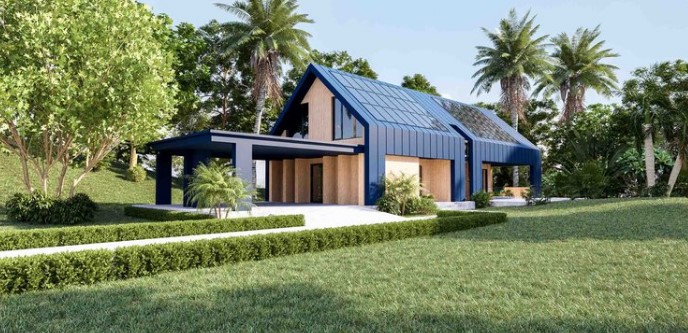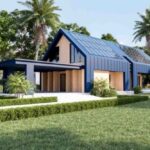
In recent years, there has been a growing awareness of the impact of living environments on people’s health and well-being. One architectural concept that has gained attention for its positive effects on occupant health is the Passivhaus design. Passivhaus, or Passive House, is a rigorous standard for energy efficiency in buildings, focusing on providing exceptional indoor comfort and air quality. This article will explore how a passive house positively impacts the health of its occupants.
Improved Indoor Air Quality
One of the key features of Passivhaus’s design is the emphasis on air tightness and mechanical ventilation with heat recovery (MVHR) systems. These systems ensure a constant supply of fresh, filtered air while efficiently recovering heat from the exhaust. The result is a significant reduction in indoor air pollutants, such as dust, allergens, and volatile organic compounds (VOCs), which are known to contribute to respiratory problems and allergies. Passivhaus Homes’ constant clean air supply helps create a healthier indoor environment, particularly for individuals with respiratory conditions.
Enhanced Thermal Comfort
Passivhaus homes are designed to provide exceptional thermal comfort throughout the year, regardless of external weather conditions. High insulation levels, airtight construction, and advanced window glazing ensure minimal heat loss and drafts. This means occupants can enjoy stable indoor temperatures without excessive heating or cooling. Maintaining a comfortable indoor temperature is crucial for the health and well-being of individuals, as extreme temperatures can lead to various health issues, including heat exhaustion, hypothermia, and respiratory problems.
Reduced Noise Pollution
Living in a noisy environment can have detrimental effects on both physical and mental health. Passivhaus design principles, such as airtight construction and triple-glazed windows, help reduce external noise penetration. These high-performance homes promote better sleep quality, stress reduction, and improved concentration levels by creating a quieter indoor environment. This is particularly beneficial for families living in urban areas or near busy roads, where noise pollution can be a persistent problem.
Minimised Moisture and Mould
Excessive moisture and mould growth in buildings can lead to various health issues, including allergies, asthma, and respiratory infections. Passivhaus homes employ a combination of airtightness, high-quality insulation, and controlled mechanical ventilation to prevent moisture buildup. This helps maintain optimal humidity levels and reduces the risk of mould growth. By creating a dry and healthy living environment, energy-efficient homes contribute to the overall well-being of their occupants.
Increased Natural Light
Natural light has a profound impact on human health and well-being. It is essential for regulating circadian rhythms, enhancing mood, and promoting Vitamin D synthesis. Zero-energy homes incorporate large windows and effective daylight strategies to maximise the penetration of natural light into living spaces. This reduces the reliance on artificial lighting and allows occupants to enjoy the numerous benefits of sunlight. Access to abundant natural light positively affects mental health, productivity, and overall satisfaction with the living environment.
Sustainable Materials and Healthy Construction Practices
Passivhaus’s design principles also prioritise using sustainable materials and healthy construction practices. This includes selecting materials with low volatile organic compound (VOC) emissions, minimising the use of toxic substances, and promoting environmentally friendly construction methods. By avoiding harmful chemicals and pollutants, these sustainable homes create a healthier indoor environment, free from the potential risks associated with conventional construction materials.
In conclusion, Passivhaus homes significantly impact the health and well-being of their occupants. From improved indoor air quality and thermal comfort to reduced noise pollution and moisture control, passive housedesign principles create a healthy and sustainable living environment. The emphasis on natural light and sustainable materials further contributes to the overall well-being of occupants. As the awareness of the importance of healthy living environments grows, sustainable home’s design offers a promising solution for creating homes prioritising occupant health and comfort.




